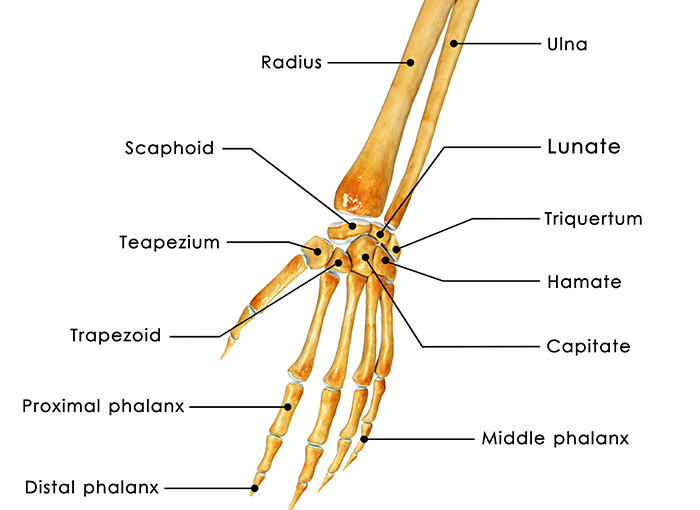Wrist Fracture
A wrist fracture is a condition that happens when one or more of the bones of the wrist are broken.

Wrist Fracture
A wrist fracture is a condition that happens when one or more of the bones of the wrist are broken. This happens often in sports, but can happen in many different circumstances. Falls and car accidents are common causes of wrist fractures.
Persons who participate in sports with a high likelihood of falls (such as skate boarding), and persons with conditions that cause thin bones are at an increased risk of having a wrist fracture.
Medical attention is highly recommended following any event that may have caused a wrist fracture. Early treatment to re-align the bones of the wrist is very important to increase the chances for a normal return of function after recovery.
Symptoms
Wrist fracture symptoms include severe pain that is worse with hand movements such as gripping or lifting, swelling, tenderness, bruising, & deformity (the bones in the wrist are no longer straight or aligned).
Causes of Wrist Fractures
Wrist fractures are most often caused by attempts to break a fall (reaching out to avoid hitting the head) during sports or other activities, and automotive accidents (usually cause more severe fractures).
Risk factors for Wrist Fractures
Risk factors for wrist fractures include participation in activities and sports associated with an elevated risk of falls, and diseases that weaken the strength of the bones in the wrist (especially osteoporosis).
Complications of Wrist Fractures
The potential complications associated with wrist fractures include chronic pain, stiffness, loss of normal motion of the wrist and hand, arthritis (even years later), and damage to the circulation or nerve supply to the hand. Close follow-up with an orthopedic specialist is always recommended following recovery to improve the likelihood for a complete recovery.
Prevention of Wrist Fractures
The best way to prevent wrist fractures is to promote bone health (exercise, balanced diet, osteoporosis surveillance and treatment, smoking avoidance), and prevent falls. For those who participate in high-risk sports, adequate training and gear selection is a key component of injury prevention. For those at risk for falls, many recommendations are important to consider for fall prevention. These include frequent vision checks, living area adjustments, and assistive devices for activities of daily living (such as walkers, shower supports), when appropriate.
When to see ROC for a wrist fracture?
ROC is available to assess any known or suspected wrist fracture, following a fall, accident or sports injury.
When should I go to the Emergency Room for a wrist fracture?
Immediate emergency room consultation is necessary if the bone is visible due to the accident, a severe deformity is present, loss of feeling to the hand or poor circulation, and if the accident resulted in trauma to other areas of the body that also require immediate attention.